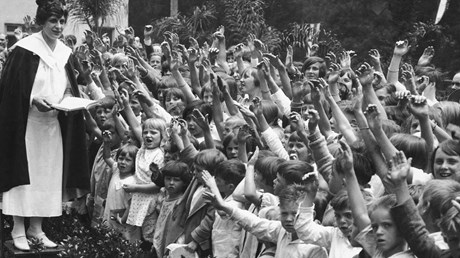Early 20th-century evangelical history was more than two camps lobbing grenades at each other.

Geoffrey Treloar’s The Disruption of Evangelicalism: The Age of Torrey, Mott, McPherson and Hammond feels like the culmination of a very long project. Back in 2003, historian Mark Noll inaugurated InterVarsity Press’s five-volume series on the history of evangelicalism with The Rise of Evangelicalism: The Age of Edwards, Whitefield, and the Wesleys. He described the series as a whole, in the introduction to that book, as accessible to any reader, yet footnoted for scholars; global in scope, though grounded in the English-speaking world; and centered on “evangelical religion, as understood by the evangelicals themselves” while attending to historical context. Subsequent volumes appeared in chronological order, except for this one, which marks the end of the series but covers the penultimate time period, 1900–1940.
The early 20th century is generally considered the low point in the long sweep of evangelical history. Superstar evangelist Dwight L. Moody died in 1899, and his mantle would not be taken up by Billy Graham until after World War II. Key events, including World War I, the Great Depression, and the rise of fascism in Europe, offered little to cheer. The period also saw the infamous fundamentalist-modernist controversy, which split numerous denominations and religious institutions along lines of biblical interpretation, doctrine, openness to scientific inquiry, and posture toward the outside world.
In a move reminiscent of the “new academic hagiography” advocated by historian Rick Kennedy (see Chris Gehrz’s post at The Pietist Schoolman blog), Treloar seeks to rehabilitate this era, casting it as a time not of narrowness and rancor but of breadth and creativity. Instead …
Continue reading…
